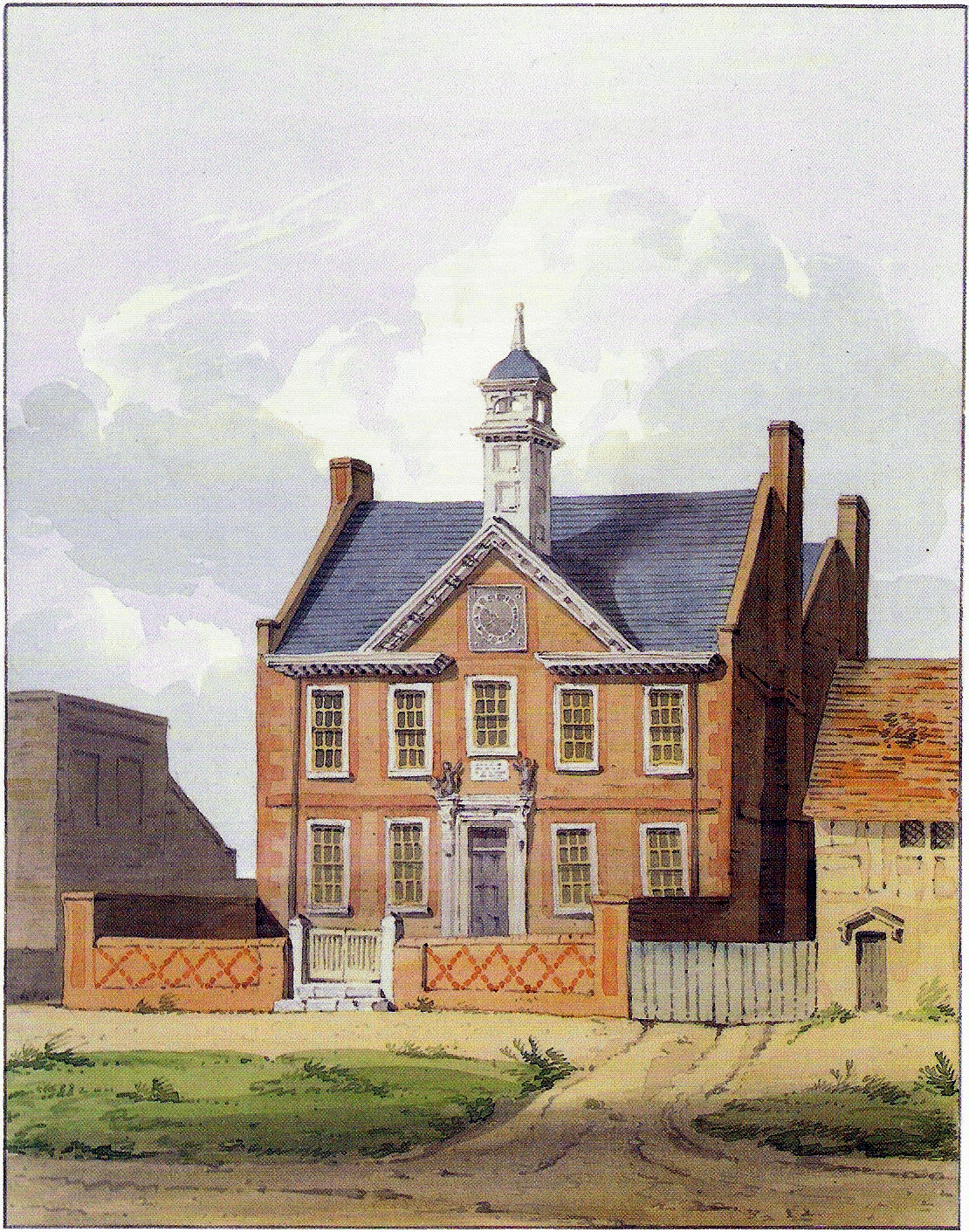
William Chew, a London distiller, had always said he wanted to found a school in Dunstable for boys from poor families. But he died in 1712 before he could do this. His two sisters and a nephew used his wealth to build and maintain this school for 40 boys in his memory. It opened in 1715. Moses Gratwick was its first Master, earning a salary of £40 per year.
Boys in those days were put out to work at an early age, their pay being vital for poor households. The school would, therefore, accept only one boy from a family at a time. The school would shut in August so that boys could earn money for their families, helping to bring in the harvest. The initial curriculum was fairly basic: reading, arithmetic, writing, spelling and general knowledge. Other subjects were introduced in later years. Each Master was allowed to maintain discipline 'in his own fashion'!
The statues above the front door show two boys in school uniforms, which were provided free to each pupil. The original statues were stolen in 1998 and disappeared, but replacements were made based on old photographs.
Between 1715 and 1898, the school had only seven Masters. None went to other schools, they either retired or died in post. Two of them are buried in the Priory Churchyard.
Poor families were very keen to get their boys into the school as it provided the best education available locally. One pupil, William Derbyshire, even became Mayor of Dunstable.

Text: Hugh Garrod ©
Design: David Turner.
Narration: Barbara Morton of Dunstable Repertory Company.
Recording: David Hornsey.
Website developer: Joshua Buckledee.